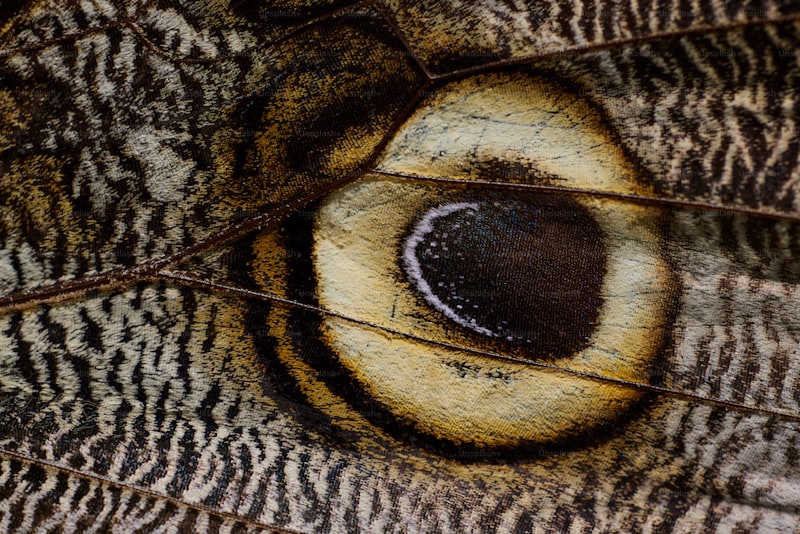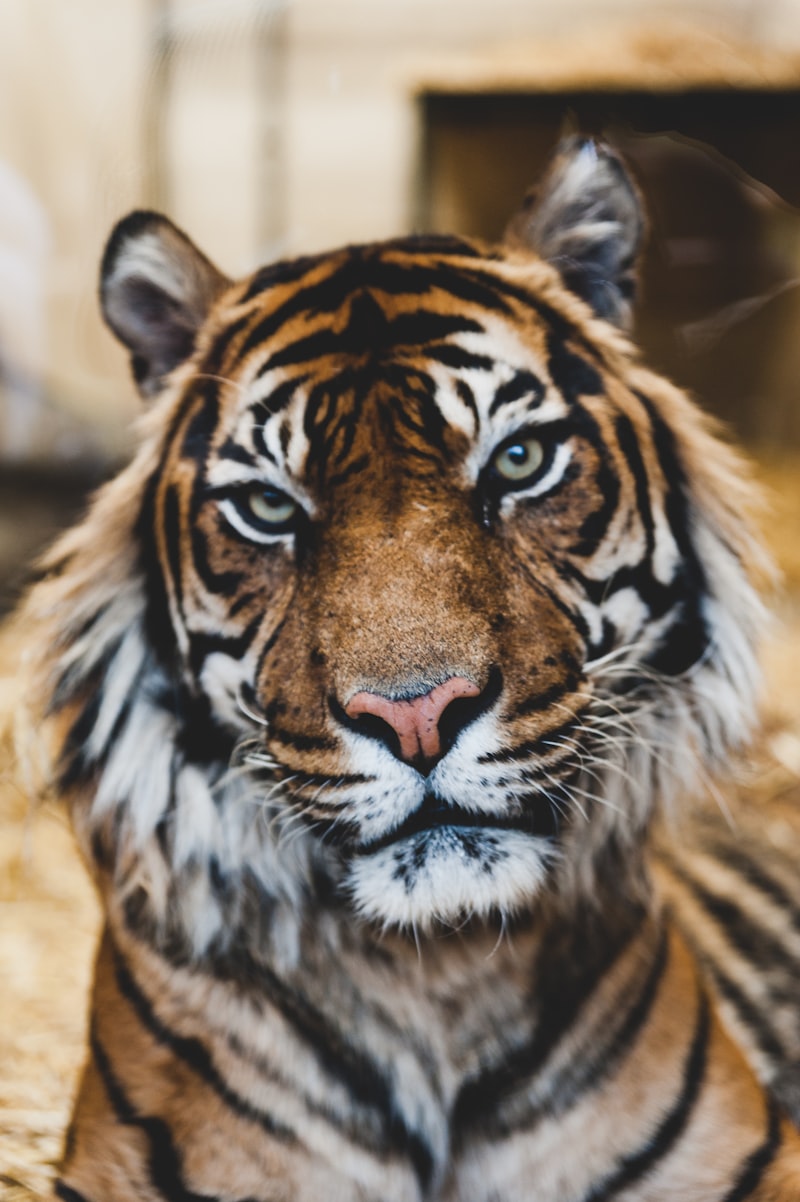Have you ever wondered how animals with unique eyesight survive in their habitats? From the depths of the ocean to dense forests, animal eyes have evolved incredible adaptations for survival. Each adaptation serves a specific purpose, enhancing their ability to hunt, evade predators, or navigate their environment.
Take the chameleon, for instance. Known for its ability to change color, its eyes are equally remarkable. They can move independently, providing a 360-degree view without moving its head. This adaptation helps it spot prey and predators from any direction, ensuring its survival in diverse landscapes.
In the ocean, the barreleye fish showcases an extraordinary adaptation. Its transparent head allows its tubular eyes to rotate upward, scanning for food above while avoiding predators below. This unique adaptation enables it to thrive in the darkest depths where visibility is minimal.
On land, the owl’s eyes are designed for exceptional night vision. Enlarged and forward-facing, their eyes gather more light, enhancing their ability to hunt in low-light conditions. This adaptation gives them a significant advantage over their nocturnal prey, showcasing nature’s precision in design.
In contrast, the horseshoe crab’s compound eyes are sensitive to ultraviolet light, aiding navigation along the ocean floor. This adaptation helps them detect predators and locate mates, ensuring their survival in their coastal habitats.
These examples illustrate nature’s ingenuity in equipping animals with eyes perfectly suited to their environments. Whether it’s for hunting, avoiding danger, or finding a mate, these adaptations highlight the crucial role of vision in an animal’s survival strategy. Next time you encounter wildlife, consider the marvels of their eyesight and how these adaptations contribute to their unique place in the natural world.
Window to the Wild: How Animals’ Unusual Eyes Help Them Survive
Consider the nocturnal owl, whose large, forward-facing eyes are like finely tuned binoculars in the dark. Their wide pupils gather ample light, while specialized feathers and structures funnel sound towards their ears, enabling silent flight and pinpoint accuracy in the hunt. These adaptations aren’t just evolutionary quirks; they are finely tuned survival tools, ensuring the owl’s place as a formidable predator of the night.
In contrast, the chameleon’s eyes possess a unique ability to move independently, scanning for prey and predators alike in all directions. Their 360-degree vision allows them to monitor their surroundings constantly, while their ability to change color helps them to blend seamlessly into their environment. It’s a marvel of nature’s engineering, where eyesight isn’t just about seeing clearly, but about staying hidden and outwitting potential threats.

For marine creatures like the hammerhead shark, their eyes are designed for life beneath the waves. Positioned at the ends of their wide, hammer-shaped heads, these eyes provide panoramic vision, aiding in the detection of prey and predators alike. Their keen eyesight, combined with a unique electro-sensory system, helps them navigate and hunt effectively in the vast expanse of the ocean.
The eyes of animals offer a profound glimpse into the diversity of life on Earth, each adaptation a testament to the challenges and opportunities presented by their habitats. Whether adapted for hunting, hiding, or navigating, these windows to the wild reveal nature’s endless ingenuity and the extraordinary ways in which animals survive and thrive in their respective environments.
Eyes of the Wild: Discovering Nature’s Most Unusual Optical Adaptations
Take the mantis shrimp, for instance. This small yet mighty creature boasts eyes that can perceive a spectrum of colors far beyond what humans can see. While we marvel at the rainbow with our red, green, and blue receptors, mantis shrimp eyes contain up to 16 different types of color receptors! Imagine seeing colors that are beyond our imagination, like polarized light and ultraviolet, enabling them to detect subtle changes in their underwater world that remain hidden to us.
Then there’s the owl, a master of nocturnal hunting. Owls have large, forward-facing eyes that are perfectly adapted for low-light conditions. Their pupils are capable of expanding to capture as much light as possible, almost like built-in night vision goggles. This adaptation allows them to spot prey in the dark with astonishing precision, making them silent aerial predators of the night.
Moving from birds to insects, we encounter the unique compound eyes of the dragonfly. These eyes are made up of thousands of individual units called ommatidia, each acting as a tiny lens that together forms a mosaic. This structure grants dragonflies an incredibly wide field of vision, crucial for their swift aerial maneuvers as they hunt other insects mid-flight.
In the depths of the ocean, the barreleye fish reveals another marvel of nature’s design. Its transparent head houses tubular eyes that can rotate within its transparent dome, allowing it to look directly upwards to detect prey or potential threats while maintaining a low profile against the water’s surface.
These examples barely scratch the surface of nature’s optical wonders. Each species’ unique eyesight provides a glimpse into their world and survival strategies, showcasing evolution’s brilliance in adapting to diverse habitats and challenges. From the depths of the ocean to the heights of the skies, these creatures continue to astound us with their extraordinary ways of seeing the world around them.
Survival of the Most Visionary: Animal Eyes That Defy Expectations
Imagine a world where vision isn’t just about seeing, but about mastering the art of survival. In the animal kingdom, eyes come in an astonishing array of forms, each adapted to meet specific challenges of their environment. From the depths of the ocean to the heights of the sky, these creatures have evolved eyes that defy expectations and showcase nature’s ingenuity.
Take the mantis shrimp, for instance. With eyes that possess more color receptors than any other animal, they perceive a spectrum of light beyond human comprehension. Their eyes are not just for sight but are weapons in themselves, capable of delivering devastating punches to prey with incredible precision.
In contrast, the nocturnal tarsier relies on its enormous eyes to navigate the darkness. These eyes are so large they outweigh its brain and serve as powerful tools for hunting insects under the moonlit canopy. Their ability to see in low light conditions is unparalleled, giving them a strategic advantage in the competitive world of the forest at night.
Venture into the depths of the ocean and you’ll encounter the barreleye fish, a creature with transparent head and barrel-shaped eyes that rotate inside its transparent dome. This adaptation allows it to look directly upwards through its head, scanning for prey or potential threats while remaining hidden from predators below.
On land, the gecko showcases another marvel of evolution with its incredible night vision. Their eyes are equipped with specialized lenses that enable them to see even in complete darkness. This adaptation helps them evade predators and hunt insects with remarkable efficiency, making them one of the stealthiest predators of the night.
From the acuity of the eagle to the sensitivity of the cat, animal eyes are a testament to the diversity of life on Earth. Each species’ unique visual adaptations reveal a story of survival against the odds, where sight isn’t just about seeing—it’s about thriving in an ever-changing world.
Beyond Sight: The Evolutionary Marvels of Unusual Animal Eyes
Consider the extraordinary eyes of the mantis shrimp, for instance. These marine crustaceans possess compound eyes that can perceive polarized light and even detect cancerous cells. Their eyes are equipped with 12 to 16 types of photoreceptors, compared to humans’ three, allowing them to see colors and light spectrums beyond our imagination.
Moving to the depths of the ocean, the barreleye fish offers another stunning example. With transparent head-domes enclosing its eyes, it navigates the dark abyss, using its upward-facing eyes to detect silhouettes of prey above. This adaptation enables it to thrive in environments where sunlight is scarce and visibility is limited.

On land, the gecko showcases a different kind of optical innovation. Its eyes are equipped with specialized lenses that allow them to see in extremely low light conditions, aiding in nocturnal hunting and predator evasion. This evolutionary trait gives them a distinct advantage in their habitat.
Further emphasizing the diversity of animal eyes, the cuttlefish demonstrates remarkable control over its appearance and visual perception. Through sophisticated pigment cells and muscles around its eyes, it can change color and texture instantaneously, using these abilities for communication, camouflage, and mesmerizing displays during courtship.
From the multi-faceted eyes of insects to the night vision of nocturnal mammals, each species has adapted its visual system to maximize survival in its environment. These evolutionary marvels not only captivate scientists but also inspire advancements in fields like robotics and imaging technology. As we delve deeper into understanding these wonders, we uncover not just the complexity of nature but also the limitless possibilities for innovation and discovery.
In exploring the world of animal eyes, we are reminded of nature’s ingenuity and the ongoing quest to unravel its mysteries. Each species’ unique adaptation serves as a testament to the power of evolution and adaptation, shaping life forms in ways that continue to both astonish and inspire.
Nature’s Watchers: How Animals’ Eyes Adapt to Their Environments
Have you ever wondered how animals’ eyes seem perfectly suited to their surroundings? From the piercing gaze of an eagle to the wide, luminous eyes of a nocturnal owl, nature has endowed each creature with eyes uniquely adapted to its environment. These adaptations go beyond mere appearance; they are a testament to evolution’s incredible ability to fine-tune every detail for survival.
Take the eagle, for instance. Its keen eyesight allows it to spot prey from incredible heights, thanks to specialized retinas that enhance visual acuity. This adaptation enables the eagle to hunt efficiently, swooping down with precision on unsuspecting prey. In contrast, the owl’s large, forward-facing eyes are designed for low-light conditions. They gather as much light as possible, allowing the owl to navigate and hunt under the cover of darkness without alerting its prey.
Then there are the underwater marvels like dolphins and sharks. Their eyes have evolved to withstand the pressures of deep-sea environments while maximizing visibility in dimly lit waters. Dolphins, known for their playful antics, possess eyes adapted to both air and water, providing them with clear vision in both mediums.
On land, predators like lions and cheetahs rely on acute depth perception and color vision to stalk prey across the savannah. Their eyes are equipped with a high concentration of photoreceptor cells, allowing them to distinguish subtle movements and colors amidst the grasslands’ hues.
Insects, too, boast remarkable ocular adaptations. Bees, with their compound eyes, perceive the world through thousands of tiny lenses, granting them a panoramic view to navigate intricate floral landscapes. This adaptation aids them not only in finding nectar but also in communicating with their hive mates through intricate dances.
Nature’s creativity knows no bounds when it comes to eyes. Each adaptation, whether microscopic or strikingly visible, serves a crucial purpose in the survival and success of its bearer. As we marvel at these wonders, we gain a deeper appreciation for the intricate web of life and the remarkable ways in which evolution shapes every aspect of the natural world.
Frequently Asked Questions
How do animals like chameleons and cuttlefish use their unique eyes for camouflage and hunting?
Learn how animals such as chameleons and cuttlefish utilize their distinctive eyes for both camouflage and hunting purposes.
What are some examples of animals with unusual eyes and how do these adaptations help them survive?
Explore fascinating animals with unique eyes like the chameleon, whose independently rotating eyes help detect prey and predators simultaneously. Cuttlefish possess W-shaped pupils for wide-angle vision, aiding in spotting food and avoiding threats. The mantis shrimp’s compound eyes detect polarized light and offer exceptional color vision, crucial for communication and hunting. These eye adaptations enhance survival by enhancing awareness, camouflage, and prey detection.
How do deep-sea creatures’ eyes adapt to the extreme pressures and low light conditions?
Discover how deep-sea creatures’ eyes adapt to extreme pressures and low light conditions, revealing fascinating mechanisms that enable survival in these harsh environments.
What are the advantages of having compound eyes, like those found in insects and crustaceans?
Discover the benefits of compound eyes, as seen in insects and crustaceans. Their structure provides wide-angle vision, detecting motion effectively and aiding in detecting predators and prey. Compound eyes are also sensitive to light variations, enabling better adaptation to diverse environments.
What role do eye adaptations play in the survival of nocturnal animals versus diurnal animals?
Eye adaptations in nocturnal animals enhance low-light vision, featuring larger pupils and enhanced light-gathering abilities like tapetum lucidum. Conversely, diurnal animals have adaptations for sharp daytime vision, including color perception and a high density of cone cells. These adaptations optimize visual capabilities according to their active times, aiding survival through efficient hunting, navigation, and predator avoidance.


